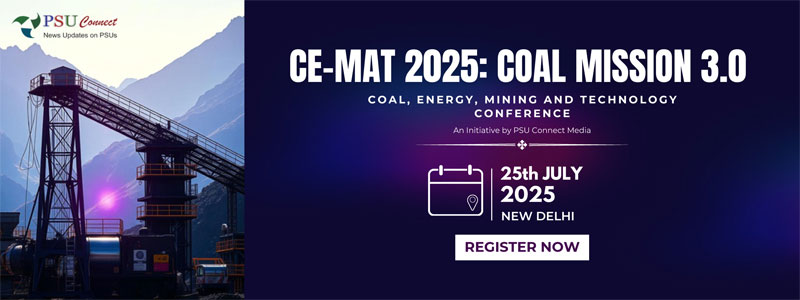Impact Assessment of CSR Projects for Sustainable Change
Despite HPCL’s great feat so far, there’s a long way to go even so.

Vani Sharma, CSR Officer, HPCL
New Delhi: Corporate Social Responsibility (CSR) has evolved into a crucial component of business strategy, reflecting a company's commitment to making a positive impact on society and the environment. However, the mere adoption of CSR initiatives is not enough; it is equally important to assess and monitor their impact to ensure meaningful and sustainable change. This is recognised by the rule of law as per the guidelines outlined under the legal ramification of the Companies Act, 2013; every company having average CSR obligation of Ten crore Rupees or more in pursuance of subsection (5) of section 135 of the Act, in the three immediately preceding financial years, shall undertake impact assessment, through an independent agency, of their CSR projects having outlays of One crore Rupees or more, and which have been completed not less than one year before undertaking the impact study.
HPCL has been at the forefront of operationalizing its CSR funds for expansive impact. Garnering the impact has been a result of clearly defining key performance indicators, both quantitative and qualitative. HPCL as part of its CSR efforts has collaborated with Indian Army to provide residential learning platforms under ‘Project Super-50 Medical & Engineering’ at 4 locations, Srinagar, Kargil, Ladakh & Rajouri for aspiring and less-privileged students of Jammu & Kashmir and Ladakh UTs. For these projects, there is a standard set-in terms of periodically looking into students’ academic performance, and quantifying the impact of the program through understanding how many out of the total batch qualified in the competitive exams they were preparing for. This kind of foresight comes in not only during the time period when the impact assessment needs to be conducted but rather at the stage of inception as well. By design, the input and the output has been clearly defined for measurable and actionable goals.
While it seems like the magic number at the end of the year posits the outcomes of the program, measuring impact should always deploy a combination of quantitative and qualitative methods to analyse the scale and depth of the program’s impact. As exhibited data provides numerical insights into the quality of coaching that is being provided in Jammu & Kashmir and Ladakh under our projects. But it leaves room for the more nuance qualitative aspects of the impact which are not necessarily captured in codified answers. Together, they offer a comprehensive understanding of the outcomes.
Join PSU Connect on WhatsApp now for quick updates! Click here
 Read Also : BEML’s Futuristic Product Innovation & Incubation Centre (FPIIC) at Bangalore Complex
Read Also : BEML’s Futuristic Product Innovation & Incubation Centre (FPIIC) at Bangalore Complex
In order to understand the needs and expectations of different groups, including employees, customers, local communities and environmental advocates, regular communication fosters transparency and helps align CSR efforts with stakeholder priorities. Partnering with NEIDO and the Indian Army for the Super-50 projects aids in familiarising HPCL with the contextual grounds under which the projects are being implemented.
This involves identifying and engaging stakeholders on the ground to understand the kind of shift the program has bought to their lives, in what way perhaps certain unintended outcomes have been achieved as well. Keeping in mind both, the implementing partner and the local community, the program has been designed and altered to fit the needs that it must.
The inadequacy of quality educational coaching faculty & infrastructure is a major disadvantage for students in the region, especially from nonurban, semirural and rural areas while aspiring for higher education qualifications at the national level. The problem gets amplified for children from the lower socio-economic strata and children caught in the crossfire of conflicts / challenges since they do not have resources to access high-quality coaching centres located outside the region. Hence, given the geospatial positioning of the location and the socioeconomic condition of the intended beneficiaries, access to quality education itself is a grave area along with outmoded teaching methods that make matters worse which doesn’t serve the kids to make them better prepared for a career later in life. The inadequacy of quality educational coaching faculty & infrastructure is a major disadvantage for students in the region, especially from nonurban, semirural and rural areas while aspiring for higher education qualifications at the national level.
The program intent of hosting an educational program is in itself inclusive of one goal that can be identified as access to quality education. However, ensuring a residential facility for the students are allied parameters that contribute to generating the desirable outcome. It has been corroborated after careful consideration and transparent feedback mechanism between all the stakeholders.
Despite its vitality, there are many challenges and key sources of concern and ambiguity that need to be tackled head on. Some of these challenges include and fall under the bracket of keeping in mind long term goals and self-sustenance of the project. For Project Super – 50, this comes with looking at not only the longevity of impact the program launches its beneficiaries into, but the larger societal shift the program intends to have. The short and long term goal prioritises enhancing the quality of education for Kashmiri youth, it intends to change the shape of curriculum that is accessible to the students. That with setting off and scaling up such a program steadily whether its latitudinal or quantitatively in the number of students in the same centre, the vision is to overturn completely the information and knowledge students have accessible to themselves. In sync, improved access to and awareness of professional opportunities are a calculated consequence of the program deliverables. This enables the means to higher incomes and financial security for underprivileged families.
Read Also : TIL signs pact with JNPA to invest Rs 20,000 crore to develop Vadhvan PortThe idea is to not be myopic with the investments made, the implementation and short-term impact must indicate an addition to the vision of astronomical societal progression. To better inform implementation decisions, impact assessments and regular monitoring frameworks are necessary. As a result of our comprehensive and robust due diligence processes and dynamic communication with its stakeholders, the Super 50 project has been meeting its goals. Exhibiting this, in the year 2021, Indian Army requested HPCL to consider increase in total number of students supported under the project based on the success rate and popularity among the youth of the valley. The project was rechristened as Kashmir Super-50 Medical and the fourth batch then included 30 residential boy students and 20 day-scholar girls to accommodate safety concerns and feasibility for girls to participate in the program as well. This focuses on multiple paradigms including that of the gender asymmetry to educational access. After all, you educate a girl, you educate her family as well.
Despite HPCL’s great feat so far, there’s a long way to go even so. The most judicious use and implementation of impact assessment, is to be open to change and dynamism. Social Return on Investment (SROI) is a new concept amongst the ever-shifting discipline of impact assessment. Assigning quantitative values to social and environmental impact can be complex. Companies may need to collaborate with experts and leverage standardized frameworks to measure and compare their contributions effectively. As a company we must look to adopt new methodologies and technology playing a pivotal role.
Read Also : SAIL wins eight national awards for communication excellenceNews Must Read
- Oil India plans to Launch Subsidiary for Green Energy Ventures
- NTPC signs tripartite MoU to build green hydrogen infrastructure in Odisha
- BEL contributes Rs. 1.89 Cr to Kerala Flood Relief
- Defense Stock, Bharat Electronics shares surges over 1.12% amid securing project worth Rs 973 crore
- IREDA Sanctions Over Rs. 3,000 Crore; CMD Commits Support for State 10 GW RE Target
- Defence Ministry awards major order to L&T
- Sensex opens with over 800 points, Nifty trading up 1.15% with positive market trend
- BEML Ltd Unveils India’s Biggest and Advanced Crawler Dozer
- IREDA Bags Triple Honours at 14th PSE Excellence Awards
- PESB Recommends Director (Finance) for SPMCIL